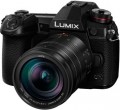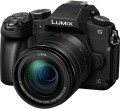DxOMark rating
The result shown by the camera in the DxOMark ranking.
DxOMark is one of the most popular and respected resources for expert camera testing. According to the test results, the camera receives a certain number of points; The more points, the higher the final score.
Total MP
The total number of individual light sensitive dots (pixels) provided in the camera's sensor. Denoted in megapixels - millions of pixels.
The total number of MPs, as a rule, is greater than the number of megapixels from which the frame is directly built (for more details, see "Effective number of MPs"). This is due to the presence of service areas on the matrix. In general, this parameter is more of a reference than practically significant: a larger total number of MPs with the same size and effective resolution means a slightly smaller size of each pixel, and, accordingly, an increased likelihood of noise (especially at high ISO values).
Effective MP number
The number of pixels (megapixels) of the matrix directly involved in the construction of the image, in fact — the number of points from which the captured image is built. Some manufacturers, in addition to this parameter, also indicate the total number of MPs, taking into account the service areas of the matrix. However, it is the effective number of MPs that is considered the main indicator — it is this that directly affects the maximum resolution of the resulting image (see “Maximum image size”).
A megapixel is 1 million pixels. Numerous megapixels ensures high resolution of the captured photos, but is not a guarantee of high-quality images — much also depends on the size of the sensor, its light sensitivity (see the relevant glossary items), as well as hardware and software image processing tools used in the camera. Note that for small matrices, high resolution can sometimes be more of an evil than a blessing — such sensors are very prone to the appearance of noise in the image.
Maximum image size
The maximum size of photos taken by the camera in normal (non-panoramic) mode. In fact, this paragraph indicates the highest resolution of photography — in pixels vertically and horizontally, for example, 3000x4000. This indicator directly depends on the resolution of the matrix: the number of dots in the image cannot exceed the effective number of megapixels (see above). For example, for the same 3000x4000, the matrix must have an effective resolution of at least 3000*4000 = 12 million dots, that is, 12 MP.
Theoretically, the larger the size of the photo, the more detailed the image, the more small details can be conveyed on it. At the same time, the overall image quality (including the visibility of fine details) depends not only on resolution, but also on a number of other technical and software factors; see "Effective MP number" for more details.
Sensor cleaning
The presence in the camera of a special mechanism for
cleaning the matrix from dust and other contaminants.
This function is found only in models with interchangeable lenses — "reflex cameras" and MILC (see "Camera type"). When replacing the lens in such cameras, the sensor turns out to be open, and the probability of its contamination is quite high; and extraneous particles on the matrix, at best, lead to the appearance of extraneous artifacts, at worst, to damage to the sensor. To avoid this, cleaning systems are provided. They usually work on the principle of ultrasound: high-frequency vibration "resets" debris from the surface of the sensor.
Note that no cleaning system is perfect — in particular, such systems are “too tough” for condensate, salt deposits and other similar contaminants. So the matrix may still need manual cleaning (ideally, in a service centre). Nevertheless, this function allows you to effectively deal with at least dust, which greatly simplifies the life of the user.
Frames per series (RAW)
The highest number of shots the camera can capture “in one shot” when shooting in RAW format continuously (see “Recording in RAW Format”).
The technical features of modern digital cameras are such that during continuous shooting, photos have to be recorded in a special buffer, and only then, after the end of the series, they can be transferred to a memory card. This buffer has a limited size, so the number of frames in one series is also limited. At the same time, we note that this indicator is usually indicated for shooting at the highest possible resolution (see "Maximum image size"); at lower resolutions, the volume of each image is reduced, and the number of frames in the series may be more than stated in the specifications.
RAW images take up more space and require more processing power than "finished" JPEGs. Therefore, the number of frames in a series of this format is usually lower than that of JPEG. However, there are exceptions — usually these are cameras that have two separate buffers (for RAW and JPEG).
Full HD (1080)
The maximum resolution and frame rate of video captured by the camera in
Full HD (1080p).
The traditional Full HD video resolution in this case is 1920x1080; other options are more specific and practically do not occur in modern cameras. Regarding the frame rate, it is worth noting first of all that a normal (not slow-motion) video is shot at a speed of up to 60 fps, and in this case, the higher the frame rate, the smoother the video will be, the less jerks will be noticeable when moving in the frame. If the frame rate is
100 fps or higher, this usually means that the camera has a slow-motion video mode.
Ultra HD (4K)
The maximum resolution and frame rate of video captured by the camera in
the Ultra HD (4K) standard.
UHD 4K refers to resolutions with a frame size of approximately 4,000 horizontal pixels. Specifically, in cameras for video shooting, resolutions of 3840x2160 and 4096x2160 are most often used. Regarding the frame rate, it is worth noting first of all that a normal (not slow-motion) video is shot at a speed of up to 60 fps, and in this case, the higher the frame rate, the smoother the video will be, the less jerks will be noticeable when moving in the frame. If the frame rate is 100 fps or higher, this usually means that the camera has a slow-motion video mode.
File recording formats
File formats in which the camera can record video. Given that the footage is designed to be viewed on an external screen, you should make sure that the playback device (DVD player, media centre, etc.) is able to work with the appropriate formats. At the same time, many camera models themselves can play the role of a player by connecting to a TV via an audio / video output or HDMI (see the corresponding paragraphs of the glossary). And if the video materials are to be viewed on a computer, you should not pay special attention to this parameter at all: problems with format incompatibility in such cases rarely occur, but are usually solved by installing the appropriate codec.

